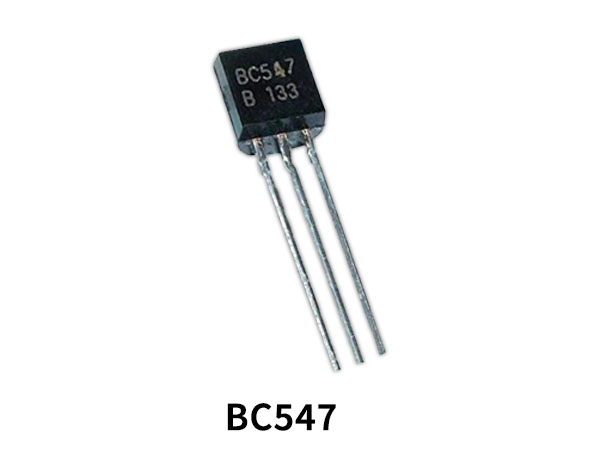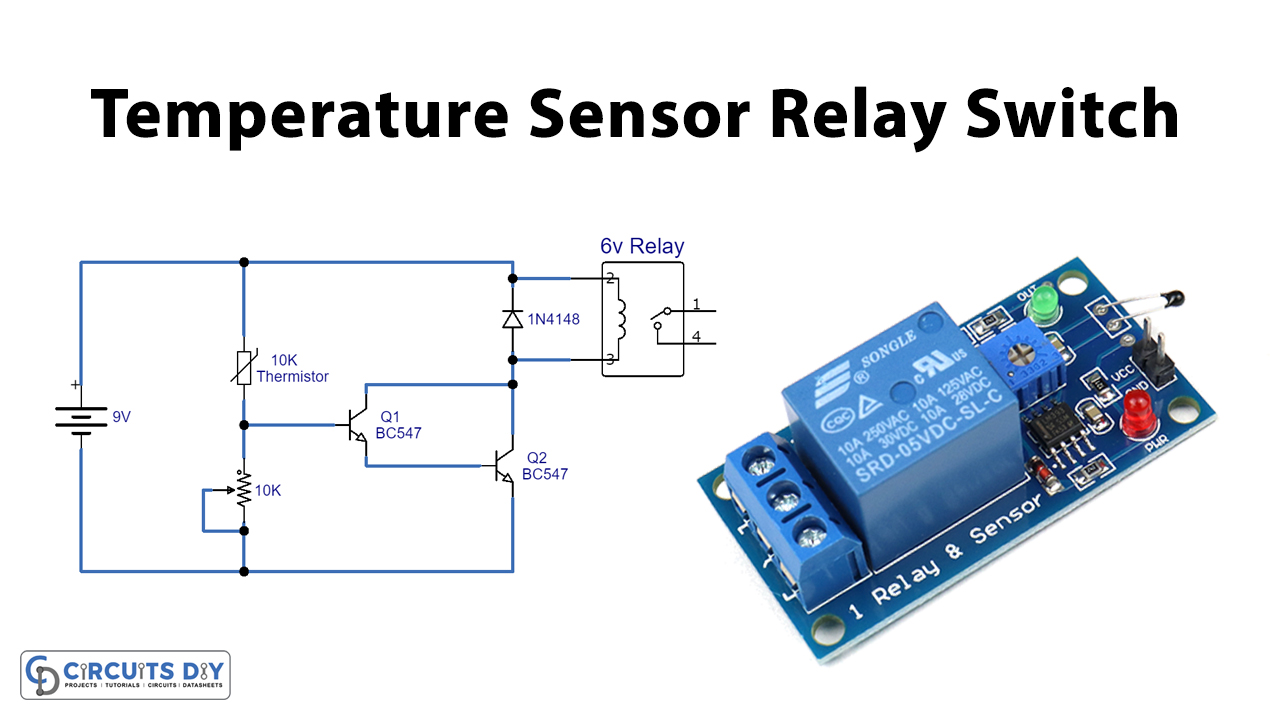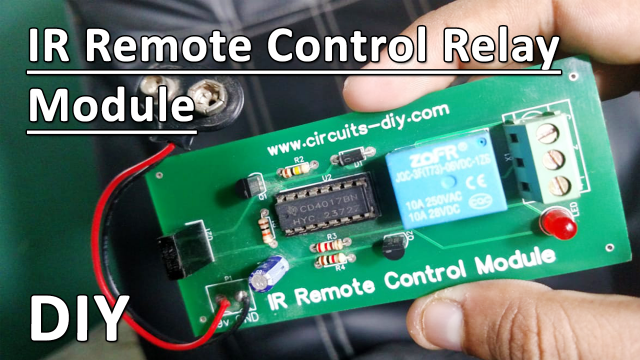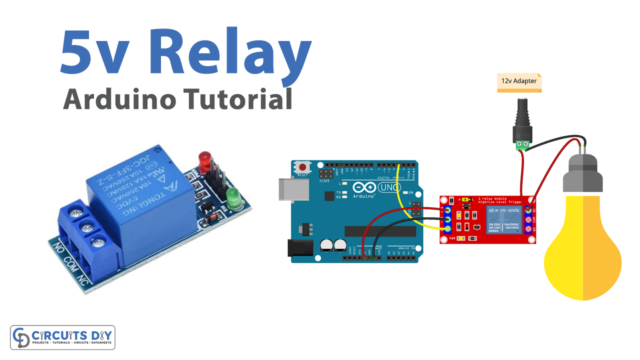Today we are going to demonstrate a project on a Temperature sensor relay switch circuit. This is just like a normal heat or temperature sensor with a relay so whenever the circuit will receive heat the relay will activate and so will the load or device connected to the relay. Any AC 110V or 220V or DC appliance can be connected to the relay so that you can operate it automatically at the desired temperature.
The circuit is inexpensive and simple it is using only 5-6 components. It is an ideal circuit for beginners looking for an easy electronic project or for those who need an inexpensive fix for their heat-sensing requirements.

Hardware Components
The following components are required to make Temperature Sensor Relay Circuit
| S.no | Component | Value | Qty |
|---|---|---|---|
| 1. | Battery | 9V | 1 |
| 2. | Thermistor | 10K | 1 |
| 3. | Transistor | BC547 | 2 |
| 4. | Relay | 6V | 1 |
| 5. | Diode | 1N4148 | 1 |
| 6. | Variable Resistor | 10K | 1 |
BC547 Pinout

For a detailed description of pinout, dimension features, and specifications download the datasheet of BC547
Temperature Sensor Relay Circuit

Working Explanation
This circuit can be operated on a 9 volts battery, transformer, or adaptor. We have connected two BC547B transistors as a Darlington pair. This increases the sensitivity and the gain of the circuit. To adjust the desired level of heat at which you want your relay to activate we have used 20K ohms variable resistors. A thermistor is the main component as it is sensing the heat. You need to connect it a little away from other components in the circuit so that the heat doesn’t get to them.
The working of this circuit is quite simple to understand. When the thermistor received heat its resistance is decreased and it lets the current pass to the circuit which activates the transistors. When transistors activate they pass the voltage to the relay which then activates. Any device connected to the relay will now turn on.
Applications and uses
This is a very useful circuit and it can be used for many purposes such as, You can turn a fan on, at the desired temperature. Activate an emergency temperature alarm for places or devices which you don’t want to overheat.













